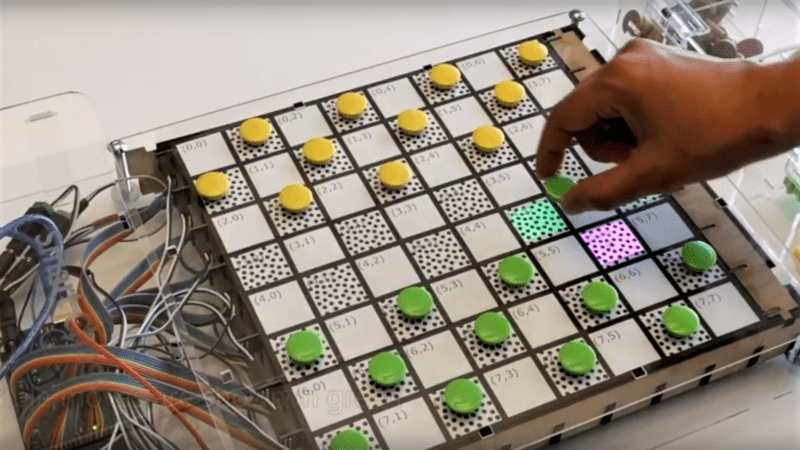In terms of equipment, chess and checkers are simple games — just a handful of pieces and a checkered gameboard. The simplicity belies the underlying complexity of the games, though, and goes a long way toward explaining their popularity over the millennia.
Increasing the complexity with an interactive game board for chess and checkers might seem counterintuitive, then. But [Bogdan Berg]’s project aims to not only teach checkers and chess but to make games a little more exciting and engaging. Looking a little like a tabletop version of the interactive dance floors we’ve been seeing a lot of lately, the board is built from laser-cut acrylic with plywood dividers to isolate all 64 squares. Neopixels and Hall-effect sensors are mounted to custom PCBs that stretch the length of a row and are wired to an Arduino Mega with lots of IO. Game pieces are colorful fridge magnets. [Bogdan]’s current program supports checkers and keeps track of where the pieces have been moved relative to their starting position and prompts users with possible legal moves.
[Bogdan]’s board already looks like a lot of fun in the video below, and we like the quality of the build and the unobtrusive nature of the interactivity. When he gets around to implementing chess, though, he might want something fancier than fridge magnets for game pieces.















Arduino, the solution for every non existing problem.
okay you have a point, but in this case it is a very interesting project and it makes learning checkers easier then it ever was. And because it has blinking lights (and lot’s of them) I like it!
I do hope that the wires will eventually be less visible, as for now it distracts attention a lot from the beautiful board.
Don’t get me wrong, it is interesting and well done, it does show potential to teach chess as well as any other means.
I am assuming it will develop beyond its current “prototype” look, a look that all projects go through.
If you use this design for chess, it will be a challenge to get everything back to the correct state if you accidentally knock over a few pieces.
why computer not move the figures?
My first computer chess game was CHESS CHALLENGER made in 1977. You had to input the moves on a keypad.